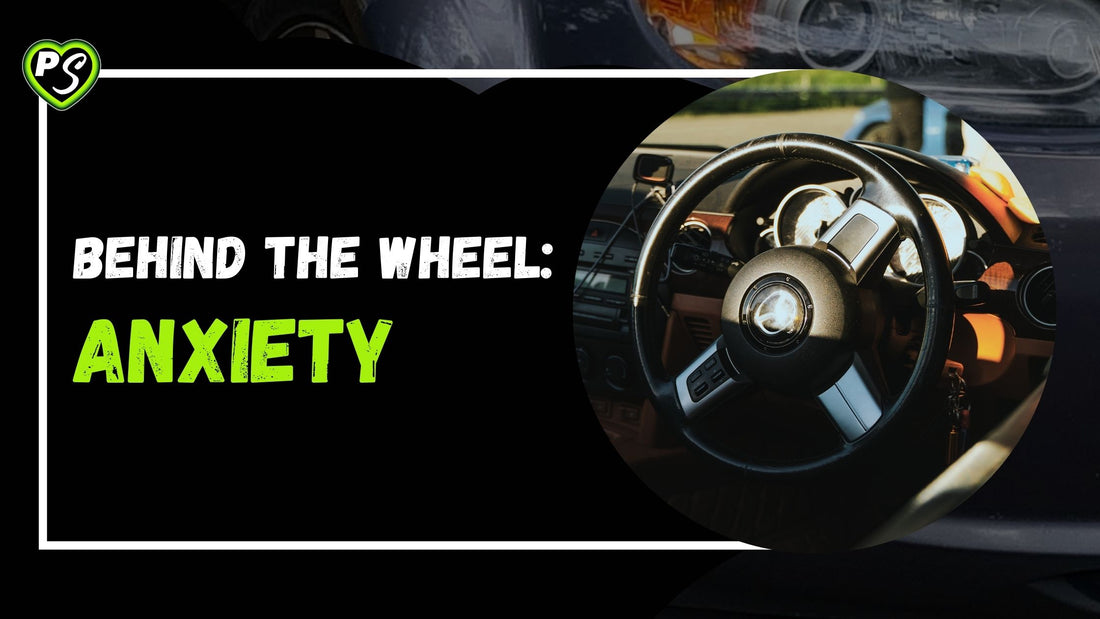
Share
(BTW) Understanding Anxiety: A Comprehensive Guide
JDMClareIn today's fast-paced and interconnected world, anxiety has become increasingly prevalent, affecting individuals across all demographics. This mental health condition is characterised by excessive worry, fear, or unease, and can manifest in various forms, ranging from mild to severe.
Understanding anxiety is crucial for promoting mental well-being on both individual and societal levels. By recognising the signs and symptoms of anxiety, individuals can seek out support and interventions to manage their condition effectively.
Fostering a greater understanding of anxiety also reduces stigma and encourages open conversations about mental health, creating a supportive environment for those struggling with anxiety to seek help without fear of judgement.
Anxiety and Panic Attacks Explained
Anxiety is a complex and multifaceted mental health condition that affects millions of individuals worldwide. It is characterised by excessive worry, fear, or unease, and can manifest on a spectrum, ranging from mild to severe. Individuals experiencing anxiety may have physical symptoms like increased heart rate, muscle tension, and restlessness, as well as cognitive symptoms such as intrusive thoughts, difficulty concentrating, and heightened sensitivity to potential dangers.
Panic attacks, another common manifestation of anxiety, are sudden and intense experiences of fear or discomfort, marked by physical and psychological symptoms like a rapid heart rate, change in breathing, and a sense of impending danger. These episodes can occur unexpectedly and may be associated with panic disorder or other anxiety conditions.
What Causes Anxiety?
Several factors can contribute to the development of anxiety, though there are few proven causes. Genetic predispositions and variations in brain chemistry, particularly involving neurotransmitters like serotonin, dopamine, and norepinephrine, may influence an individual's vulnerability to anxiety disorders. Past traumatic experiences, or adverse childhood experiences can lead to changes in the brain and the way it responds to stress, while major life changes or chronic stress can overwhelm coping mechanisms and contribute to anxiety. Everyone’s experience will be different, and there are a number of factors involved in the causes of anxiety in each of us as unique individuals.
Situations Leading to Anxiety
Anxiety can manifest in various situations, including existential concerns about life's purpose and mortality, social situations like meeting new people or public speaking, and uncertainty and change associated with major life transitions or unpredictable circumstances. These situations can trigger feelings of dread, restlessness, and a pervasive sense of worry, impacting individuals' daily functioning and overall well-being.
A diverse yet common experience, social anxiety is triggered by various social interactions, such as meeting new people, public speaking, or attending social events. It involves a fear of negative judgement, embarrassment, or scrutiny by others. This form of anxiety may stem from a fear of being evaluated negatively, a lack of self-confidence, or past negative social experiences. It can be exacerbated by perceived expectations and pressure in social settings. Physical symptoms like blushing, sweating, trembling, and cognitive symptoms such as excessive self-consciousness or fear of humiliation are commonly experienced. Avoidance of social situations may result as a coping mechanism.
Anxiety tied to uncertainty and change arises from concerns about the unknown, major life transitions, unpredictable circumstances, the fear of lacking control over outcomes, and the stress associated with adapting to new situations. This type of anxiety is characterised by symptoms like restlessness, heightened alertness, and a pervasive sense of worry. The human inclination for predictability and control often clashes with the unpredictable nature of life events, major transitions, or unforeseen circumstances, ultimately fuelling anxiety. The process of adapting to new situations amplifies these concerns, triggering a heightened state of unease.
How does Anxiety Feel?
Physical symptoms: Physically, anxiety often triggers a range of sensations, and a notable example is the tightness in the chest. This sensation is akin to a gripping or constricting feeling, creating discomfort and a sense of pressure. It may feel as though there is a weight on the chest, making each breath more effortful. This physical manifestation is linked to the body's "fight or flight" response, where muscles tense up in preparation for potential danger, even in situations where there is no immediate threat.
Psychological symptoms: Anxiety profoundly affects mental processes, leading to racing thoughts and a pervasive inability to focus. The mind becomes a whirlwind of worries, often centering on future events or potential negative outcomes. These thoughts may loop incessantly, making it challenging to redirect attention or engage in productive thinking. The mental turbulence can interfere with decision-making, problem-solving, and overall cognitive functioning, creating a mental state characterised by persistent unease.
Emotional Symptoms: Emotionally, anxiety creates an intense feeling of dread and fear. Individuals may feel constantly on edge, anticipating something negative or threatening, ultimately deteriorating their self-worth, as the inability to change the repeating nightmare becomes apparent. This emotional state contributes to heightened irritability and tension, as the nervous system remains in a state of heightened arousal. Worry and unease become dominant emotions, colouring one's outlook on various aspects of life. This emotional backdrop can impact relationships, daily interactions, and overall well-being, creating a challenging emotional landscape to navigate.
The Effects of Anxiety
Anxiety can have profound effects on individuals, leading to panic attacks, digestive problems, and even depression. Panic attacks are intense episodes of fear or discomfort, accompanied by physical symptoms like rapid heart rate and shortness of breath. Digestive problems, including stomach aches and changes in bowel habits, can arise from heightened stress and anxiety. Prolonged and intense anxiety can also contribute to the development of depression, impacting individuals' daily functioning and overall quality of life.
Anxiety can escalate to the point of triggering panic attacks, which are intense episodes of fear or discomfort. During a panic attack, individuals may experience a rapid heart rate, shortness of breath, chest pain, trembling, sweating, and a sense of impending doom. These physical and psychological symptoms can be overwhelming and may last for a few minutes. Panic attacks often occur unexpectedly and can be linked to specific triggers or situations. These experiences can be highly distressing and disruptive to daily life. The fear of experiencing another attack can lead to anticipatory anxiety, affecting an individual's willingness to engage in certain activities or go to specific places.
Prolonged and intense anxiety can contribute to the development of depression. Anxiety and depression often coexist, sharing common symptoms, such as persistent feelings of sadness, fatigue, changes in appetite or sleep patterns, and a diminished interest in activities. Anxiety may lead to a chronic state of stress, exhausting mental and emotional resources and potentially contributing to the onset of depressive symptoms.
Impact on Others
An individual's anxiety can also affect those around them, leading to emotional distress, communication challenges, and strained relationships. Friends and family members may experience heightened concern and empathy for the individual dealing with anxiety, while communication difficulties and avoidance behaviours can strain relationships and lead to misunderstandings.
Emotional Impact: Friends and family members may experience heightened concern and empathy for the individual dealing with anxiety. They may share in the emotional burden and feel a sense of helplessness or worry. Without proper understanding and support for themselves, friends and family may begin to feel rejected, resentment, or even angry about the situation.
Communication Challenges and social dynamic: Anxiety can sometimes lead to communication difficulties. The individual may withdraw or have difficulty expressing their feelings, leading to misunderstandings or strained communication with loved ones. The person with anxiety may avoid social situations or activities that trigger their anxiety. This can impact shared social activities and family events, leading to changes in the usual dynamics of relationships.
Substance abuse: When an individual copes with anxiety through substance abuse, it can strain relationships all round and result in further feelings of isolation. Emotional distress, strained communication, financial strain, worry, role reversals, and isolation are common consequences. Children may be particularly affected, witnessing the challenges. Legal issues and health concerns further exacerbate the impact of this negative coping method.
Cycle of Negative Thinking
- Triggering event that leads to negative thoughts.
- Intense emotional and physical responses.
- Adoption of avoidance behaviours perpetuating the cycle.
Understanding the cycle of negative thinking associated with anxiety is crucial. It typically begins with a triggering event that leads to distorted and pessimistic thoughts, followed by intense emotional and physical responses, and culminates in avoidance behaviours that perpetuate the cycle.
In the first stage of a cycle of negative thinking, a triggering event occurs, such as a challenging situation or an unexpected stressor, leading to the emergence of negative thoughts. These thoughts are often distorted and pessimistic, amplifying the impact of the triggering event. In the second stage, intense and distressing emotional and physical responses follow the negative thoughts. Emotions like anxiety, sadness, or anger intensify, accompanied by physical symptoms such as a racing heart or muscle tension. Finally, in the third stage, individuals may adopt avoidance behaviours as a coping mechanism, steering clear of situations or activities that trigger anxiety, perpetuating the cycle by limiting opportunities for positive experiences and reinforcing negative beliefs.
Self-Help Strategies for Anxiety
- Establishing a structured daily routine.
- Practising mindfulness and relaxation techniques.
- Utilising self-help Cognitive Behavioural Therapy (CBT) techniques.
Several self-help strategies can assist individuals in managing anxiety. Creating a structured daily routine, practising mindfulness and relaxation techniques, and engaging in self-help cognitive behavioural therapy (CBT) are effective approaches to alleviate anxiety symptoms. Additionally, enjoyable activities like spending time in nature, engaging in creative pursuits, and listening to music can provide a sense of calm and relaxation.
Creating a structured daily routine can provide a sense of predictability and control, helping to manage anxiety. Prioritising self-care activities, such as adequate sleep, regular exercise, and balanced nutrition, will positively contribute to overall well-being. Developing a daily and consistent schedule that includes specific times for work, meals, relaxation, and sleep will foster stability and reduce uncertainty, addressing some of the triggers associated with anxiety. Sufficient time should also be dedicated to activities that bring joy or relaxation, whether it's reading, spending time outdoors, or engaging in hobbies, as an established routine will reinforce a sense of order and stability.
Mindfulness and relaxation practices can alleviate anxiety by directing individuals to focus on the present moment without judgement. Techniques like deep breathing, progressive muscle relaxation, and guided imagery induce a state of calmness by engaging the body's relaxation response and reducing physiological arousal associated with anxiety. Deep breathing regulates the autonomic nervous system, progressive muscle relaxation releases physical tension, and guided imagery shifts focus away from anxiety-inducing thoughts. Integrating these practices into daily routines establishes consistent tools for managing stress, making them habitual and promoting resilience over time. By fostering a non-judgmental awareness of thoughts and feelings, mindfulness practices provide individuals with accessible and effective strategies for navigating anxiety, cultivating a sense of calm and well-being.
Self-help Cognitive Behavioural Therapy (CBT) is a useful way to ease anxiety by helping individuals change negative thoughts and behaviours. It involves recognising and challenging anxious thoughts, gradually facing fears, and setting achievable goals. Learning problem-solving skills and questioning unhelpful beliefs also contribute to feeling more in control and less anxious. Self-help materials like workbooks and online resources, can provide practical exercises for applying CBT techniques independently. While self-help CBT is effective, it's important to seek professional help for more complex or ongoing anxiety.
Professional Support for Anxiety
Local resources and treatments are available to individuals experiencing anxiety problems. The national charity, Anxiety UK and local divisions of Mind offer a range of services and resources, including educational courses, counselling, support groups, and online resources, to assist those struggling with anxiety. They will help you identify support in your local area.
Conclusion
Anxiety is a complex and prevalent mental health condition that can have significant effects on individuals' lives. By understanding its causes, symptoms, and impact, as well as utilising effective self-help strategies and accessing available resources and treatments, individuals can navigate the path to wellness and manage their anxiety effectively.
If you’re experiencing anxiety, or want to know more about supporting someone who is, consider visiting our Mental Health Road Map for further resources, information and support.
You are not alone.








